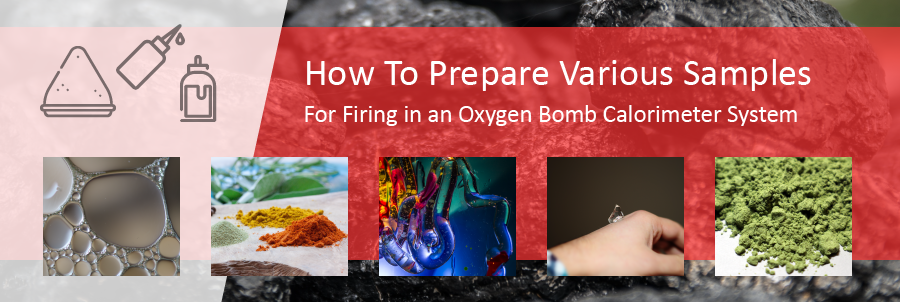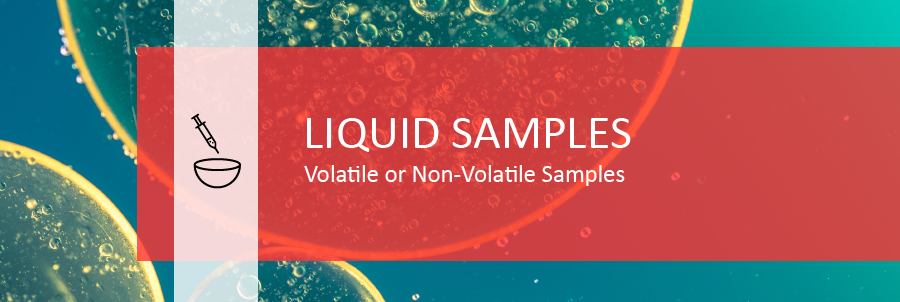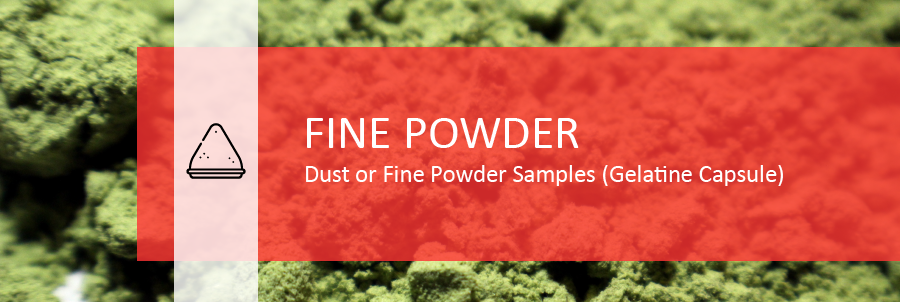

LIQUID, VOLATILE SAMPLES
The evaporation of the liquid must be prevented during the handling of the sample. This is achieved by using a crucible cover disc and injecting the liquid through the cover disc with a syringe. The complete process is a little involved:
- Measure the calorific value of the crucible cover disc as KJ/g beforehand in a normal procedure.
- Tare a crucible and use a cover disc. Weigh the crucible and cover, establish the mass of the used disc.
- You can use the spike or easy spike (cotton-addition) method.
- Tare the crucible and cover disc. Inject with a syringe the sample into the crucible by piercing the cover disc. Enter the sample weight into the calorimeter.
- Put the crucible into the vessel with the cotton thread lying on top. Put the vessel into the calorimeter and if needed instruct the calorimeter to perform a spike calculation.
LIQUID, NON-VOLATILE SAMPLES
This would be oils. Use a syringe to transfer the oil into the crucible. Take care not to have any spillage or oil on the crucible walls or rim.

FINE POWDER SAMPLES
The danger with these materials is that they explode after ignition and some unburned material is deposited on the vessel walls. You need to press the sample into a tablet or use a gelatin capsule as follows :
- Weigh a gelatin capsule and establish its calorific value (CV) before proceeding with the actual dust sample.
- Weigh a new gelatin capsule, then tare the balance. Fill the capsule with the dust material, close it, and weigh it again. This is the sample weight.
- Enter the gelatin capsule weight in the spike mass and the gelatin capsule CV into the spike CV. Enter the dust sample weight into the sample mass. You can also use the "cotton addition" to calculate the actual CV of the gelatin capsule before adding it into the cotton correction.
- Perform the sample determination as normal. The gelatin capsule ignites very easy and prevents the sample from "scattering".

GEL SAMPLES
A gel type substance would be butter or grease. Scoop out the approximate amount and deposit it into the crucible with a second spatula. Prevent the material from ending up on the crucible rim.
LOW ENERGY, LOW COMBUSTIBLE SAMPLE, OR DIFFICULT TO IGNITE SAMPLES
The solution is SPIKING. This is the process in which the unknown sample is combusted in the presence of a known material (the SPIKE), which is normally Benzoic Acid.
All DDS Calorimeters can handle spiking. The spike material is weighed first, and then the spike mass (and if the spike material is different from Benzoic Acid: The spike calorific value) is entered into the unit. Then the balance is zeroed and the unknown sample is weighed on top of the spike. The unknown sample weight is entered into the calorimeter. Then the calorimeter must be instructed to perform a spike calculation. The latest units perform a spike calculation automatically when the spike mass is larger than zero.
The calorimeter burns the complete material. It then calculates the complete released energy and subtracts the spike energy from it. It displays the energy of the unknown sample only. This spiking method applies to sample which are too wet, don't like to ignite, and have too little energy.
THE SPIKING METHOD
What is spiking? If a sample does not ignite easily or not at all in a calorimeter, then the spiking method of ignition can be used to promote complete combustion of the sample. Only once the sample is completely burned can an accurate determination of the sample be ascertained. A combustion aid is added to the sample, like a Benzoic Acid Tablet, which will easily ignite, and in turn ignite the non-combustible sample.
Read MoreSPIKING OPERATIONS
The spiking method is called for when a sample has a very low CV or burns reluctantly. Then a better burning material is added to the sample to help the process. The better burning sample is the spike. The ‘Spike’ must be of a known calorific value, usually benzoic acid of approx. 26.454MJ/Kg. On some occasions, a Gelatin Capsule (3K-4-068) or Crucible Cover Disc (CAL2K-FLDS) needs to be as a Spike.
Read MoreCOTTON & WIRE CORRECTION
The sample is ignited by sending a current through the firing wire. This makes the wire glow, which in turn ignites the cotton thread, which in turn ignites the sample. The cotton and wire correction compensates for the electrical firing wire energy and the energy of the burned cotton. The default setting is 0.08°C.
Read More
